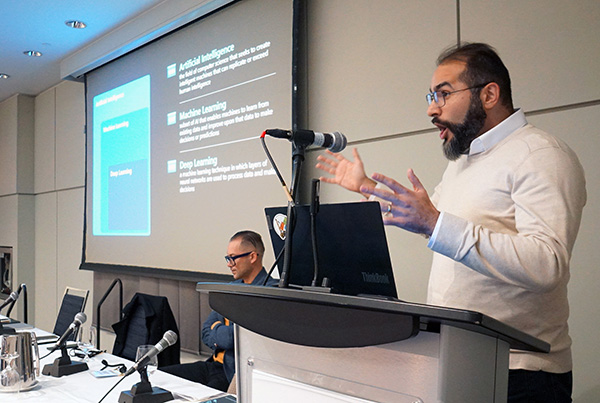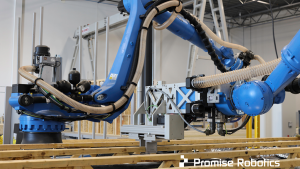Artificial intelligence will reshape architecture by helping architects generate new designs, optimize old ones and simulate building behaviour under a variety of conditions.
But to get there architectural firms must start hiring people not just with design skills but backgrounds in AI development, said Kostika Lala, principal architect with LALA Studio, which integrates AI and architecture to increase the speed and efficiency of its building designs.
Lala, who addressed a seminar on AI’s integration into architecture at the Buildings Show recently in Toronto, pointed out developing relationships with manufacturers “to create clean data” will also help save design time, improve efficiencies and cut change orders.
Lala said AI models open the door to speed designs, compared to BIM where data is input manually.
“It would be like having a live feedback model that tells us how the project is going, how its carbon-embedded footprint is,” he said.
Seminar speaker Hossein Sarshar, senior ML architect at Microsoft, said while it is too early to see an impact of generative AI on the design world, as it grows it will “definitely impact the way we deal with things.”

Sarshar said the point at which AI will be indispensable is when it moves past the ideas it creates to “generate and do the things it has created.
“We are at the infancy of gen AI, especially in the world of architecture.”
He said the sector’s growth will see the development of Large Language Models (LLMs) which are algorithms that focus on the interaction between humans and AI. Small Language Models (SLMs) that are fine tuned for specific tasks are also in development.
While gen AI might be a while from maturation, Sarshar said today “it can come up with materials faster and better and go through the cycle to be more efficient.”
Lala said architectural firms have the ability to use their own data to create branding and specific architectural styles through the GPT (generative pre-trained transformer) models.
“The models become more like you and that is where your real brand comes in,” Lala explained.
He added if architects start training on the development of LLMs now to help them establish, among other things, “that look they want, within a year they will have an LLM model.”
But training staff can be a hurdle when few architects have anything more than a basic knowledge of AI.
Lala told the seminar audience architectural schools need to develop courses in AI.
“The future of architecture will benefit from AI a lot, but students have to become comfortable with the technology first.”
The session’s moderator Monifa Charles-Dedier, a lecturer at the University of Toronto’s John H. Daniels Faculty of Architecture, Landscape and Design, said a PhD course is being developed at the school and material from it could be integrated into the masters and undergrad programs.
“What will the future of drawings be and will we still need lines on paper anymore?” asked Lala. “I really see the future being affected by AI very strongly and we as architects need to be at the forefront of it.”









Recent Comments